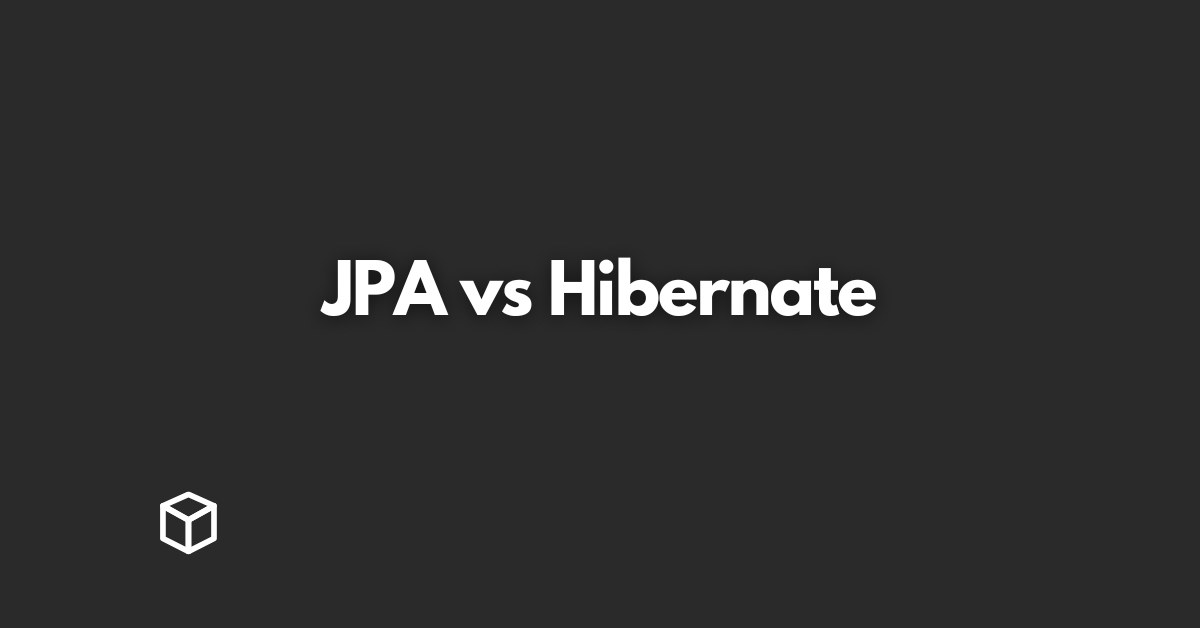Java Persistence API (JPA) and Hibernate are two popular technologies used for database persistence in Java applications.
In this article, we will take a detailed look at JPA and Hibernate, including their definitions, key features, and use cases.
We will also compare JPA and Hibernate and discuss best practices for using them together.
JPA (Java Persistence API)
JPA is a Java specification for managing, persisting, and accessing data between objects and relational databases.
It was first introduced as part of the Java Enterprise Edition (Java EE) platform in 2006 and has since become a standard for database persistence in Java applications.
One of the key features of JPA is its ability to provide a common interface for interacting with different relational databases.
This allows developers to write code that is independent of the underlying database, making it easier to switch between different databases without having to rewrite large portions of code.
Another benefit of JPA is that it uses object-relational mapping (ORM) to map Java objects to relational database tables.
This allows developers to work with objects in their Java code rather than having to write complex SQL queries.
In the development process, JPA is typically used as a framework for creating and managing database connections.
It is also used to create and execute database queries and to perform database transactions.
Developers can use JPA to define and configure the database schema, and to define the mapping between Java objects and database tables.
An example of JPA in action is in a web application that stores customer information.
The Java code uses JPA to interact with the database and perform operations such as inserting, updating, and deleting customer records.
Hibernate
Hibernate is an open-source ORM framework that implements the JPA specification.
It was first released in 2001 and has since become one of the most popular ORM frameworks for Java.
One of the key features of Hibernate is its ability to generate database-specific SQL code.
This allows Hibernate to optimize the SQL code for the specific database being used, resulting in improved performance.
Another benefit of Hibernate is its support for caching, which can improve the performance of database operations by reducing the number of database calls that are made.
Hibernate also provides a built-in query language, called HQL, that allows developers to write database queries using objects rather than SQL.
In the development process, Hibernate is typically used as a framework for creating and managing database connections.
It is also used to create and execute database queries and to perform database transactions.
Developers can use Hibernate to define and configure the database schema, and to define the mapping between Java objects and database tables.
An example of Hibernate in action is in a web application that stores customer information.
The Java code uses Hibernate to interact with the database and perform operations such as inserting, updating, and deleting customer records.
Comparison of JPA and Hibernate
While JPA and Hibernate have many similarities, there are also some key differences between the two.
JPA is a specification, while Hibernate is an implementation of that specification.
This means that JPA defines the standard for how ORM should work in Java, while Hibernate provides a specific implementation of that standard.
One of the main differences between JPA and Hibernate is that Hibernate provides additional features beyond what is included in the JPA specification.
For example, Hibernate provides support for caching and a built-in query language, while JPA does not.
Additionally, Hibernate also provides additional performance optimization features and can generate database-specific SQL code.
When deciding whether to use JPA or Hibernate, it’s important to consider the specific needs of your project.
If you need the additional features that Hibernate provides and performance is a key concern, then Hibernate may be the better choice.
However, if you prefer a more standard approach and don’t need the additional features that Hibernate provides, then JPA may be a better fit.
In terms of integration, JPA and Hibernate can work together seamlessly.
Hibernate can be used as the implementation for the JPA specification, allowing developers to take advantage of the additional features provided by Hibernate while still adhering to the JPA standard.
When using JPA and Hibernate together, it’s important to follow best practices for database performance and security.
This includes using caching and connection pooling to improve performance, and properly configuring the database schema and mapping.
Conclusion
In conclusion, JPA and Hibernate are both powerful technologies for database persistence in Java applications.
JPA is a standard specification for ORM, while Hibernate is a popular implementation of that specification.
Both technologies have their own strengths and use cases, and can be used together seamlessly.
The future looks promising for JPA and Hibernate as they are widely adopted and continues to evolve with the latest Java versions.
For those looking to learn more about JPA and Hibernate, there are plenty of resources available online, including tutorials, documentation, and forums.




